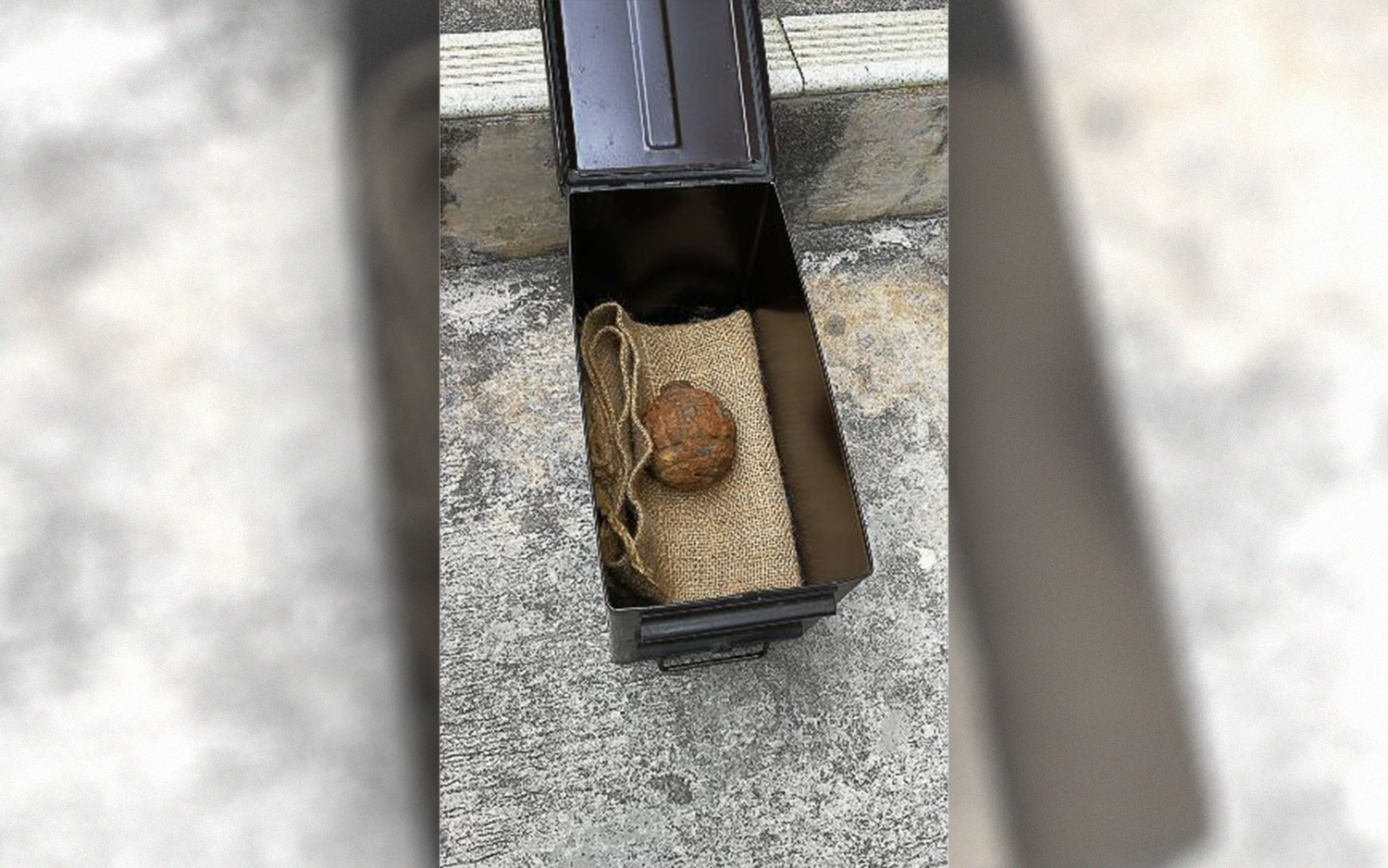Snack Attack! Chip Factory Finds WWI Grenade Packed in Potatoes

Workers in a Hong Kong potato chip factory recently unpacked a bushel of trouble, when they discovered that a shipment of French potatoes contained a German hand grenade dating to World War I.
The spherical grenade was found on Feb. 2 at about 9 a.m. local time at the Calbee Four Seas Company factory in Hong Kong, China, Agence France-Presse (AFP) reported. It measured about 3 inches (8 centimeters) wide, weighed about 2 lbs. (1 kilogram) and was thought to be in "an unstable condition," Hong Kong Police Force superintendent Wilfred Wong Ho-hon told AFP.
Police identified the bomb as German-made, deployed in a war that ended more than a century ago. Judging by the grenade's potato-like camouflage of mud and soil, the bomb was likely long buried on a French WWI battlefield that later became a potato farm, the AFP reported. [10 of the Most Powerful Explosions Ever]
After securing the area, officers with the Hong Kong Police Explosive Ordnance Disposal Bureau detonated the grenade outdoors at the factory site around noon; they placed it in a hole in the road and triggered an explosion with a high-pressure water jet, police representatives posted on Facebook.
Using powerful water jets to detonate or even destroy bombs from a distance is a method that has been employed by demolitions experts since the 1990s, according to the U.S. Navy. One method used by bomb-disposal robots to prevent explosions is to shoot high-pressure water jets at exposed wires; dislodging them could break a critical circuit, disrupting a bomb's power supply and rendering it inert, the BBC reported in 2016.
In Hong Kong, Police recorded time-lapse video of the detonation and shared it on Twitter, offering an exclusive glimpse at preparations that ended (safely) with a bang.
Infantry soldiers during WWI used dozens of types of grenades, including spherical ball grenades like this one, according to the Canadian War Museum. Though the Hong Kong grenade is thought to have been German in origin, German soldiers at the time typically favored the stick grenade; it had a smaller explosive charge, but could be thrown farther.
Sign up for the Live Science daily newsletter now
Get the world’s most fascinating discoveries delivered straight to your inbox.
In similar news, a recently found WWII-era grenade was detonated safely by bomb experts in Florida. However, officials didn't learn about the grenade until after the couple who found it brought it to their local Taco Bell.
- 7 Technologies That Transformed Warfare
- The 22 Weirdest Military Weapons
- Killer Chemistry: The Chemical Weapons of World War I (Photos)
Originally published on Live Science.

Mindy Weisberger is an editor at Scholastic and a former Live Science channel editor and senior writer. She has reported on general science, covering climate change, paleontology, biology and space. Mindy studied film at Columbia University; prior to Live Science she produced, wrote and directed media for the American Museum of Natural History in New York City. Her videos about dinosaurs, astrophysics, biodiversity and evolution appear in museums and science centers worldwide, earning awards such as the CINE Golden Eagle and the Communicator Award of Excellence. Her writing has also appeared in Scientific American, The Washington Post and How It Works Magazine. Her book "Rise of the Zombie Bugs: The Surprising Science of Parasitic Mind Control" will be published in spring 2025 by Johns Hopkins University Press.
Why is yawning contagious?
Scientific consensus shows race is a human invention, not biological reality










